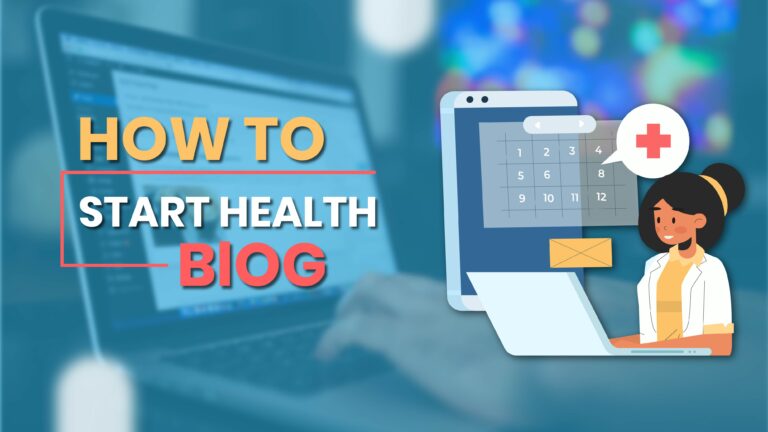Starting a health blog in 2024 requires strategic planning, quality content, and engagement with your audience. Health bloggers provide valuable insights into wellness, nutrition, fitness, and mental health. They help readers navigate their wellness journeys by sharing evidence-based information and personal experiences. This article outlines how to start a health blog, focusing on niche selection, content creation, audience engagement, monetization strategies, and maintaining credibility.
1. Select a Niche
To start a health blog, select a specific niche within the broader health and wellness category. Choosing a niche helps target your audience effectively. Here are popular health blog niches:
- Nutrition: Focus on dietary advice, meal planning, and healthy recipes.
- Fitness: Cover workout routines, exercise tips, and fitness challenges.
- Mental Health: Discuss mindfulness, stress management, and mental wellness.
- Holistic Health: Explore natural remedies, alternative medicine, and lifestyle changes.
- Chronic Illness: Share personal experiences, coping strategies, and support resources.
Importance of Niche Selection:
Selecting a niche allows you to differentiate your blog from competitors. It establishes your authority and attracts a dedicated readership.
2. Choose a Domain Name
To create a health blog, choose a domain name that reflects your niche. The domain name should be memorable, easy to spell, and relevant to your content. Tools like Namecheap or GoDaddy can help check domain availability.
Best Practices for Domain Selection:
- Use relevant keywords to enhance SEO.
- Keep it short and simple.
- Avoid hyphens and numbers.
3. Select a Blogging Platform
Choose a blogging platform that suits your technical skills and needs. Popular platforms include:
- WordPress: Offers extensive customization and flexibility. Ideal for beginners and advanced users.
- Wix: User-friendly interface with drag-and-drop features. Suitable for those who prefer simplicity.
- Squarespace: Provides beautiful templates and integrated hosting. Great for visually-focused blogs.
Considerations for Platform Selection:
Choose a platform that allows for easy navigation, customization, and optimization for mobile devices. User-friendly interfaces can enhance your blogging experience.
4. Set Up Hosting
To launch a health blog, select a reliable hosting service. Hosting services store your blog’s data and make it accessible online. Popular hosting providers include:
- Bluehost: Recommended by WordPress, offers affordable plans and 24/7 support.
- SiteGround: Known for excellent customer service and high-speed performance.
- HostGator: Provides scalable solutions for growing blogs.
Importance of Hosting:
Choosing the right hosting service ensures your blog runs smoothly. It influences website speed, security, and uptime.
5. Design Your Blog
To design your blog, select a theme that aligns with your niche and audience preferences. Consider the following:
- Responsive Design: Ensure your theme adapts to various screen sizes.
- Visual Appeal: Choose a clean, professional layout that enhances readability.
- User-Friendly Navigation: Organize content into categories for easy access.
Customization Tips:
Customize your blog with a logo, color scheme, and typography that resonate with your brand. Incorporate visuals to make your content engaging.
6. Create High-Quality Content
To establish authority, create high-quality content that resonates with your audience. Focus on the following elements:
- Research: Use credible sources for health information. Rely on peer-reviewed studies, government websites, and reputable health organizations.
- Originality: Provide unique insights and perspectives. Avoid plagiarism by citing sources appropriately.
- Clarity: Write in a clear, concise manner. Use simple language and short sentences for easy comprehension.
Content Types to Consider:
- Informative articles on specific health topics.
- Personal stories and experiences related to health challenges.
- How-to guides for fitness routines, meal prep, or wellness practices.
- Expert interviews and guest posts from healthcare professionals.
7. Optimize for SEO
To increase visibility, optimize your blog for search engines. Follow these SEO best practices:
- Keyword Research: Use tools like Google Keyword Planner to identify relevant keywords. Focus on long-tail keywords that align with user intent.
- On-Page SEO: Include keywords in titles, headings, and meta descriptions. Use alt text for images to improve accessibility and searchability.
- Internal Linking: Link to other relevant articles on your blog. This improves user engagement and boosts SEO.
Importance of SEO Optimization:
Optimizing for SEO enhances your blog’s visibility in search results. Higher rankings increase organic traffic and attract more readers.
8. Promote Your Blog
To build an audience, promote your blog through various channels. Consider the following strategies:
- Social Media: Utilize platforms like Instagram, Facebook, and Pinterest to share your content and engage with followers. Create visually appealing posts and stories to attract attention.
- Email Marketing: Build an email list to share updates, exclusive content, and newsletters. Tools like Mailchimp can help manage your email campaigns.
- Networking: Connect with other bloggers and health professionals. Guest posting and collaborations can expand your reach and credibility.
Benefits of Promotion:
Effective promotion increases your blog’s visibility, drives traffic, and helps you build a community around your content.
9. Engage with Your Audience
To foster a loyal readership, engage with your audience through various methods:
- Comments Section: Respond to comments and questions on your blog. Encourage discussions and provide valuable insights.
- Surveys and Polls: Use tools like SurveyMonkey to gather feedback on your content. Understand your audience’s interests and preferences.
- Social Media Interaction: Engage with followers on social media platforms. Reply to messages, ask for opinions, and create polls to encourage participation.
Importance of Audience Engagement:
Engaging with your audience builds trust and loyalty. It fosters a sense of community and encourages readers to return to your blog.
10. Monetize Your Blog
To generate income from your health blog, consider various monetization strategies:
- Affiliate Marketing: Promote health-related products or services through affiliate links. Earn commissions on sales generated through your links. Platforms like Amazon Associates and ShareASale offer affiliate programs.
- Sponsored Posts: Collaborate with brands to create sponsored content. Ensure the products or services align with your audience’s interests.
- Ad Networks: Join ad networks like Google AdSense to display ads on your blog. Earn revenue based on clicks and impressions.
Benefits of Monetization:
Monetizing your blog allows you to generate income while sharing valuable health information. It can provide financial freedom and enable you to invest in your blog’s growth.
11. Maintain Credibility
To establish and maintain credibility, prioritize accuracy and ethical standards in your content. Consider the following practices:
- Cite Sources: Always reference credible sources when presenting health information. Use academic journals, government publications, and reputable organizations as references.
- Transparency: Disclose any affiliations or sponsorships. Be honest about your experiences and expertise in the health field.
- Continued Education: Stay updated on health trends and research. Attend webinars, read reputable health publications, and participate in relevant courses.
Importance of Credibility:
Maintaining credibility enhances your authority as a health blogger. Readers are more likely to trust and share your content if it is reliable and well-researched.
12. Analyze and Improve
To ensure your blog’s success, regularly analyze your performance and make necessary improvements. Use tools like Google Analytics to track:
- Traffic Sources: Understand where your visitors come from and which channels drive the most traffic.
- User Behavior: Analyze how users interact with your content. Identify popular posts and areas for improvement.
- Engagement Metrics: Monitor metrics like bounce rate and time on page to assess content effectiveness.
Importance of Analysis:
Analyzing your blog’s performance helps identify trends and optimize strategies. Continuous improvement ensures long-term success and audience satisfaction.
Conclusion
Starting a health blog in 2024 provides an opportunity to guide readers towards wellness. By selecting a niche, creating quality content, optimizing for SEO, and engaging with your audience, you can build a successful platform. Monetizing your blog while maintaining credibility ensures you can share valuable health insights while generating income. Stay dedicated to your mission, continue learning, and adapt to the ever-evolving health landscape.
Frequently Asked Questions (FAQs)
What is the best platform to start a health blog?
WordPress is the best platform for health blogs due to its flexibility and extensive customization options.
How do I choose a niche for my health blog?
Choose a niche based on your interests, expertise, and audience demand. Consider areas like nutrition, fitness, mental health, or chronic illness.
What type of content should I create for my health blog?
Create informative articles, personal stories, how-to guides, and expert interviews to engage your audience and provide valuable insights.
How can I promote my health blog effectively?
Utilize social media, email marketing, and networking with other bloggers to promote your content and reach a broader audience.
How can I monetize my health blog?
Monetize through affiliate marketing, sponsored posts, and ad networks. Choose strategies that align with your audience’s interests and values.


No Comments
When I originally commented I clicked the “Notify me when new comments are added” checkbox and now each time a comment is added I get four emails with the same comment. Is there any way you can remove people from that service? Bless you!
Your comment is awaiting moderation.